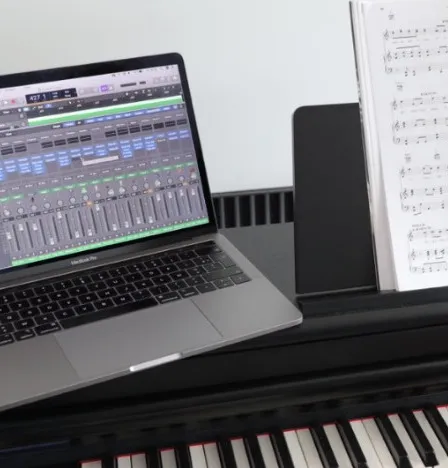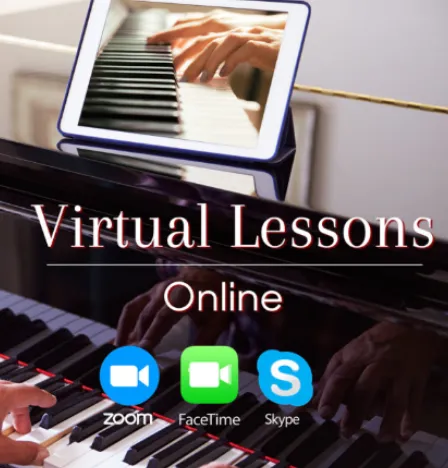App Yours!
1, 2, 3! No, these are not Wi-Fi passwords or the login data for the intranet of your local tax office. These are sounds that you might recognise from the past or that you might hear today in the hallway of the music school. Frantic attempts by a music teacher to help the student remember the metre and rhythm of the music. Can't this be done more intuitively? Yes, it can!
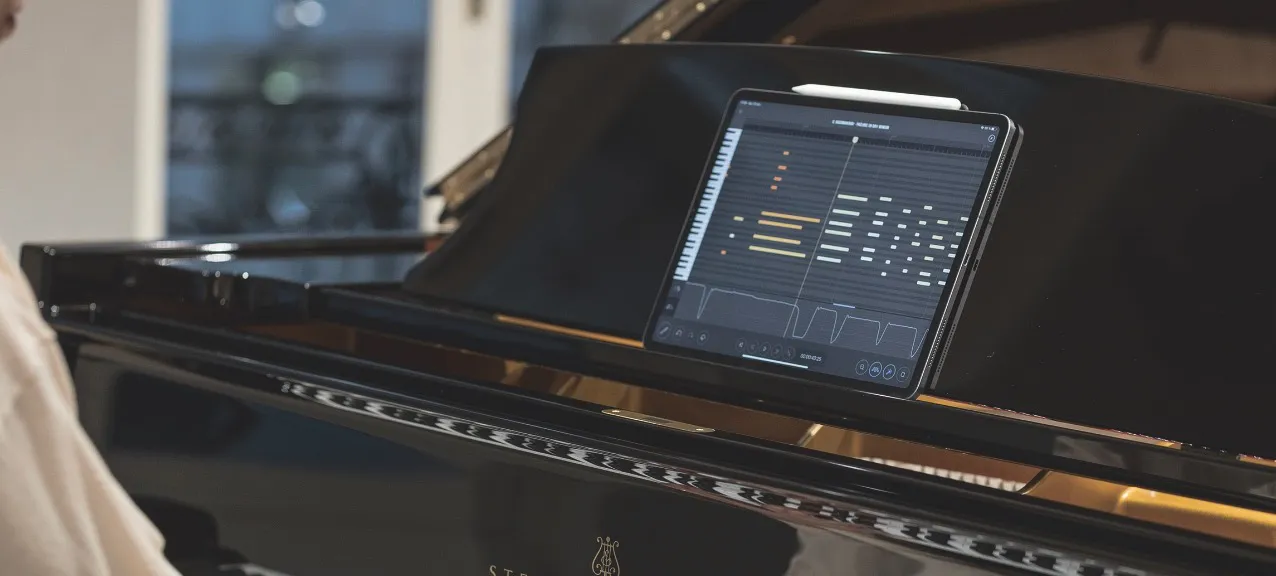
Speaking as a teacher, I have often tried to teach my students the importance of rhythm in this way. But the difficulty lies in the fact that even the most basic musical performance is a total picture of listening, feeling, understanding and then doing. Elements that are almost inextricably bound up with each other and that, on their own, can get bogged down in abstract and dry explanations.
Fortunately, in the wake of smartphones, tablets and laptops, a large number of apps have emerged that provide the modern player with almost all conveniences and sometimes even very practical support for practising at home or during lessons. Today, a few pointers to finding the app of your choice in the digital forest of providers and trinkets.
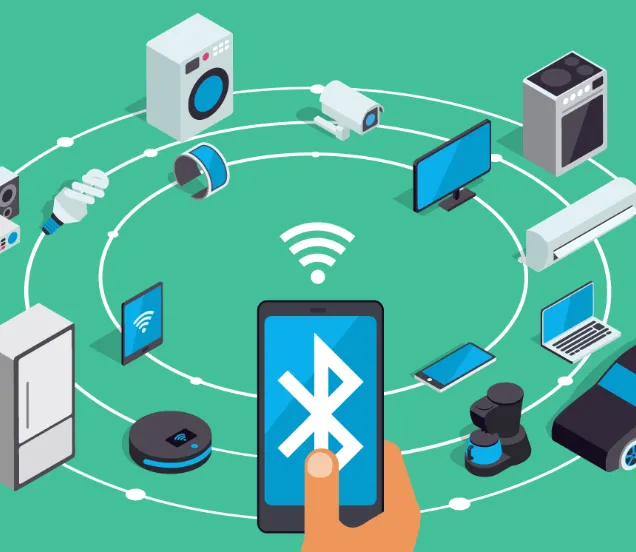
Hello who is this?
Apps make you think of a smartphone. Whoever thinks of apps for the piano probably thinks of a digital piano first. Not undeservedly so of course, because an instrument must have some connectivity in order to enjoy the combination of instrument and app. Fortunately, almost all built-in silent systems nowadays have excellent possibilities to connect to other devices.
Although apps are naturally developed to be as user-friendly as possible, the amount of possibilities can sometimes cause some confusion. So let's start at the beginning: What is the best way to connect my instrument to, for example, my tablet?
Connections fall into three categories:
Bluetooth
- Pro: wireless
- Con: possibly weak signal
Cable
- Pro: Connection is instant and strong
- Con: Cable might hinder your playing
Wi-Fi
- Pro: Wireless and strong connection
- Con: most instruments can only connect via an external USB-device
Once you have made your choice, the journey really begins. For just as 18th century piano builders tried to outdo each other with the latest developments, today's big names try to outdo each other digitally, sometimes with very surprising results.
From Smart to Partner
Japan remains not only the land of the rising sun, but also a leader when it comes to technological developments. Especially Yamaha and Kawai, but also Roland, offer a variety of apps that, in combination with their instrument line, provide the player with a unique experience. A few examples:
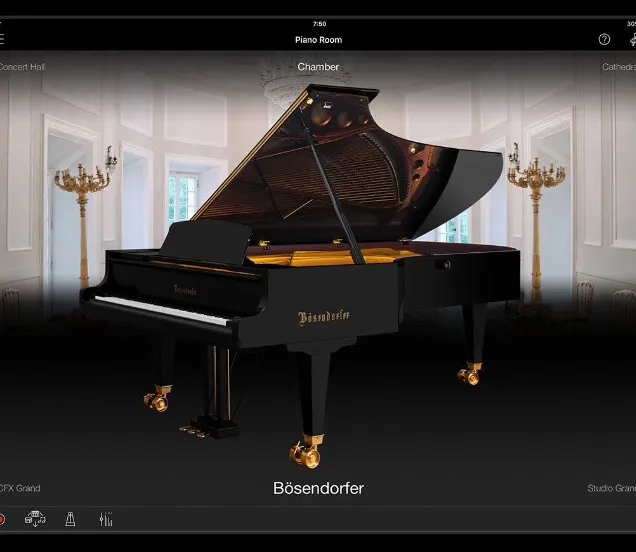
Yamaha Smart Pianist
This app offers you the possibility to convert the sound of your Yamaha instrument to, for example, a Yamaha CFX (concert grand piano) Bösendorfer, Upright etc. Now this is nothing new but the app then offers the possibility to place your instrument in different rooms which changes the acoustics considerably. You can even set the grand piano to a smaller position or close it completely in order to achieve a smaller sound.
If this doesn't go far enough, you can influence the characteristics of the different rooms or the instrument even further. For example, you can use Touch Curve to adjust the keyboard to your playing style. If you really want to go into depth, you can even use Unique Key Setting to adjust the characteristics of each individual key in order to achieve a completely unique playing experience.
When it comes to making music, the app also has a few nice features that contribute to the enjoyment of playing. The so-called Chord Tracker was already a feature of Yamaha but it is now built in as standard and the quality has also been considerably improved. This makes it very easy to upload your favourite songs and have them analysed, resulting in a fully written chord diagram. Want to play along but the tempo is too high? No problem, you can easily adjust it. Is the key a bit high to sing along? Simply transpose until you find the right pitch.
Another possibility within the same app is to play along with different music styles. Whether it's a Brazilian bossa nova or American blue grass, Smart Pianist offers it all and best of all, your combo will always adapt to your chosen chords. This way, playing together suddenly becomes very easy!
Pros: A beautifully finished and very comprehensive app with lots of different options and details.
Cons: An extensive app with almost too many different options.
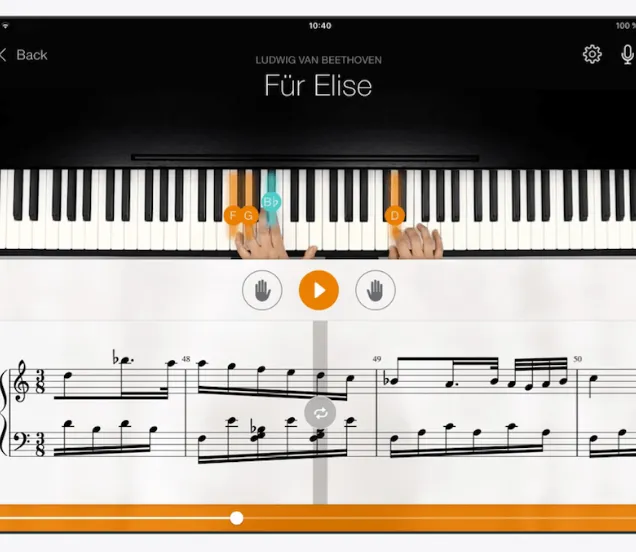
Yamaha Flowkey
This post started with the question of whether the process of learning and playing could not be a bit more intuitive. Flowkey was designed with exactly this in mind. Through simple arrangements of well-known melodies (e.g. Claire de Lune, Swan Lake, etc.), the beginning player learns to play along with the sheet music. The app keeps track of where he or she is and even stops if a wrong note is played. Hands can be switched on or off, the tempo adjusted and, of course, playing along with a metronome is also an option.
In addition to this support, there is also a visual aid. The player sees two hands playing along from above and can thus follow their example. This is handy if you are visually inclined and do not want to achieve a result just by using the meticulous dots and lines.
The only disadvantage of the app is that the emphasis is mainly on the beginner. More advanced material is available but only if you choose Flowkey Premium and that comes at a small monthly fee. Perhaps when you have acquired the taste for music, this pay wall will not be an obstacle, but it would have been a bit more sporty if the music selection was in proportion to the large amount of possibilities that Smart Pianist offers for free.
Pros: Flowkey makes the process of playing and learning a whole lot more intuitive and proves that technology has a serious place in this process.
Cons: A relatively small range of material. The really interesting material is unfortunately behind a pay wall.
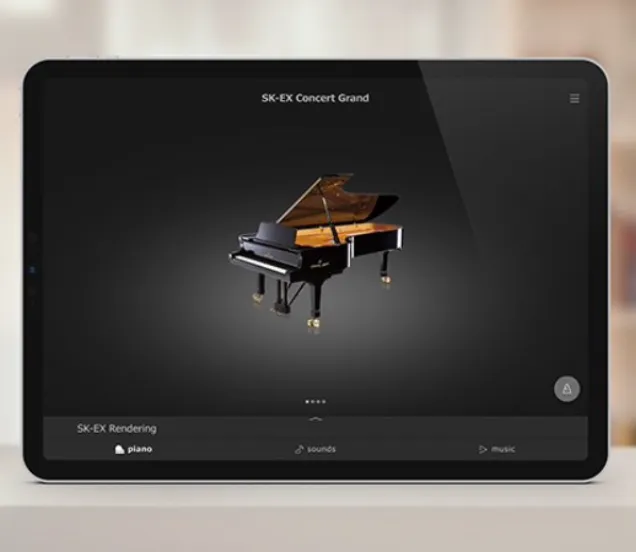
Kawai Piano Remote
What you as reader may or may not know is that both Yamaha, Kawai and Roland have their headquarters in the Japanese city of Hamamatsu. Maybe the adage 'keep your friends close and your enemies closer' plays a role here, because it is clear that at least Kawai and Yamaha keep a close eye on each other.
Piano Remote shows some similarities to Yamaha's Smart Pianist in appearance. But the comparison ends here, because the app is unfortunately quite limited compared to the options that Smart Pianist offers. Also, it must be said that with only three models (the CA9900GP, CA99 and CA79) the compatibility is rather limited.
Still, Kawai manages to put together an attractive app here which, in combination with its beautiful samples, is a valuable addition to the very high quality instruments and certainly contributes to increasing your enjoyment of playing.
Pros: Piano Remote offers a similar experience to Smart Pianist and, like its competitor, is very user-friendly.
Cons: The choices in the app itself are unfortunately rather limited. And it can only be used on 3 of Kawai's 18 different digital instruments.
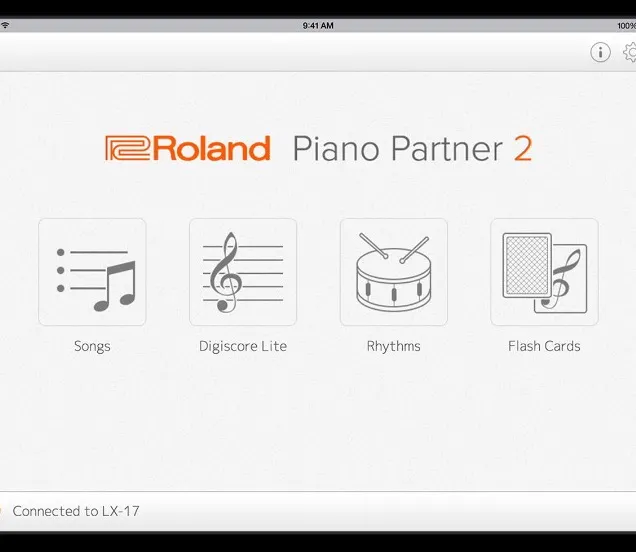
Roland Piano Partner 1 & 2
Finally today, we look at a completely different manufacturer. Roland distinguishes itself from its competitors by only producing digital and stage pianos. You would expect that a company that positions itself on the market in this way would develop an app that beats its competitors. Does Roland deliver on this promise? "Jein" as the Germans say it so beautifully.
Piano Partner and the more recent Piano Partner 2 both offer nice features but are not exactly a feast for the eyes. If you are a seasoned digi-fan, this may not be necessary, but compared to the other apps, Roland can still gain some ground here.
In terms of content, both apps are interesting when it comes to keeping track of your daily activities. With the Diary option, you can see what you have been up to via various statistics and (if you are proud enough of the result) share it via social media.
Another nice feature is the Flash Card option with which you as a player can improve your note reading or listening. A feature that you can also use without connecting.
Pros: It is easy to track and even share the activities behind the instrument. Some of the app can even be used without having to connect to the instrument.
Cons: The biggest drawback of both Piano Partner 1 and 2 is the Bluetooth connection. The quality of this connection is downright variable unfortunately and definitely needs attention.
Conclusie
Whether you go for the quality of a Roland, Yamaha or Kawai, in the end the instrument must be the deciding factor. But an app can certainly increase your playing pleasure and weigh in the decision to make a certain purchase.
So let our consultants inform you well and you will soon be at home in this wonderful world!
A last but certainly not least tip is that most apps are developed for the Iphone and sometimes some adjustments have to be made to make them work on Android. Therefore, take a good look at the various possibilities and check them again on Apple Store or Google Play Store.


